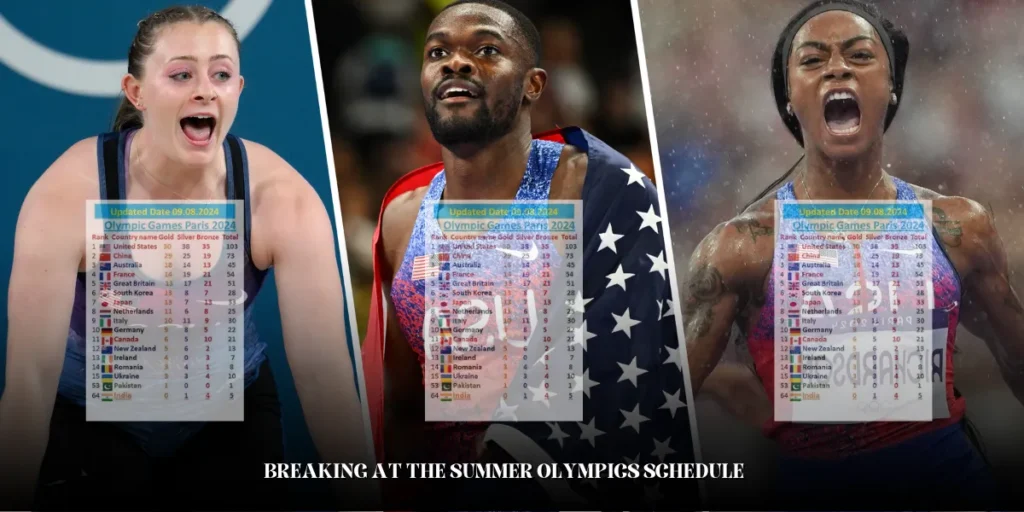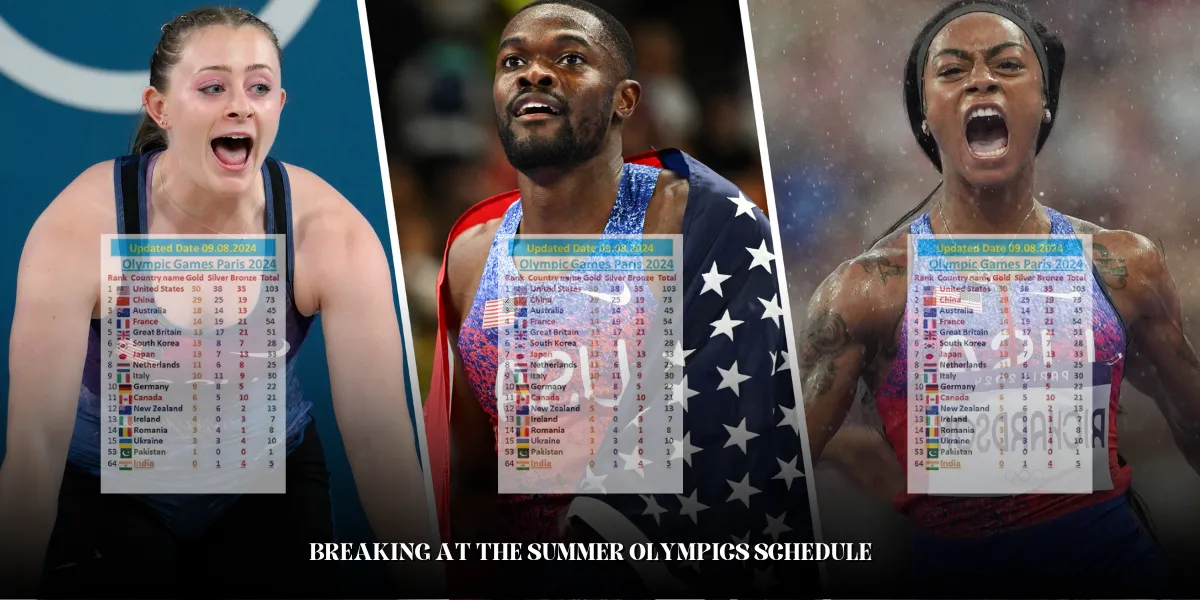
Breaking into the Olympics: A New Era of Dance and Sport
breaking at the summer olympics schedule: Breaking’s Historic Olympic Debut
Paris, France breaking at the summer olympics schedule ) – Today, the world witnessed a groundbreaking moment as breaking, also known as breakdancing, made its much-anticipated debut at the Summer Olympics. This vibrant and energetic dance form, which has its roots in the streets of New York, has ascended to the global stage of the world’s most prestigious sporting event. The inclusion of breaking in the Paris 2024 Olympics is not only a historic milestone but also a testament to the evolution of dance into a recognized sport, blending athleticism, creativity, and culture.
Breaking’s Development from Street Culture to Olympic Sport
Origins and Cultural Significance
Breaking originated in the 1970s as a key element of hip-hop culture, reflecting the struggles, aspirations, and creativity of urban youth. Born on the streets, breaking quickly became a powerful form of expression, characterized by its dynamic moves, intricate footwork, spins, and gravity-defying freezes. Over the decades, breaking has grown from a subcultural phenomenon into a global movement, influencing music, fashion, and even social norms.
Breaking’s Journey to the Olympics
The journey of breaking from the streets to the Olympics is a story of perseverance and passion. The dance form first caught the attention of the international sports community at the Youth Olympic Games in Buenos Aires in 2018, where it was featured as a competitive event. The overwhelming enthusiasm and positive reception of breaking at this event set the stage for its inclusion in the Paris 2024 Olympics. This journey reflects the broader recognition of street culture and the expansion of traditional definitions of sport.
The Olympic Breaking Format: Structure and Judging Criteria
Competition Format and Categories
In the Paris 2024 Olympics, breaking is featured in both men’s and women’s categories. The competition is structured as one-on-one battles, a format that is integral to breaking culture. In these battles, dancers face off against each other, showcasing their skills, creativity, and personality. The head-to-head nature of the competition amplifies the intensity and excitement, making each battle a unique display of athleticism and artistry.
Judging Criteria
The judging panel, composed of experts in the breaking community, evaluates the dancers based on several key criteria:
- Technique: The precision and execution of moves, including footwork, power moves, and freezes.
- Musicality: How well the dancer’s movements correspond to the rhythm, beats, and mood of the music.
- Originality: The uniqueness and creativity of the dancer’s style and routine.
- Showmanship: The dancer’s ability to engage the audience and convey their personality through their performance.
This comprehensive judging approach ensures that the essence of breaking is preserved, even as it adapts to the formalities of the Olympic stage.
The Impact of Breaking on the Olympics
A New Audience and Broader Appeal
The inclusion of breaking in the Olympics is expected to attract a new and diverse audience to the Games. Breaking’s energetic and visually captivating nature appeals to younger generations, many of whom may not typically engage with traditional Olympic sports. This fresh demographic has the potential to revitalize the Olympic audience, bringing in new fans and increasing overall viewership.
Global Recognition and Cultural Exchange
For the breaking community, the Olympics provide an unparalleled platform for global recognition. Dancers who have honed their skills in local battles and underground scenes now have the opportunity to showcase their talents on the world stage. This exposure not only elevates the status of breaking as a sport but also fosters cultural exchange, as dancers from different backgrounds bring their unique styles and influences to the competition.
Challenges and Opportunities for Breaking
Balancing Tradition with Modernization
One of the significant challenges facing breaking as it enters the Olympics is maintaining its authenticity while adapting to the structured format of the Games. Breaking’s roots in street culture are central to its identity, and there is a risk that the Olympic spotlight could dilute this essence. However, there is also a tremendous opportunity for breaking to evolve, finding new ways to express its core values within the Olympic framework. The challenge lies in striking a balance between preserving the raw, unfiltered nature of breaking and embracing the formalities of a global sporting event.
Financial Support and Professionalization
The Olympics also offer breaking an opportunity to gain financial support and professionalization. With Olympic recognition, breaking is likely to attract sponsorships, funding, and media attention that were previously out of reach. This influx of resources can help support dancers, create training programs, and build infrastructure for the sport’s future growth. However, it is essential that these developments benefit the entire breaking community and not just a select few.
The Future of Breaking in the Olympics
Sustaining Momentum Beyond Paris 2024
The success of breaking at the Paris 2024 Olympics will be crucial in determining its future in the Olympic program. If the event proves popular with both athletes and spectators, it could pave the way for breaking to become a permanent fixture in future Games. This would mark a significant step forward for dance sports and further solidify breaking’s status as a legitimate and respected athletic discipline.
Inspiring the Next Generation
Perhaps the most significant impact of breaking’s inclusion in the Olympics is its potential to inspire the next generation of dancers. Young people around the world, who might have never considered breaking as a viable path, now have Olympic role models to look up to. This inspiration could lead to a surge in interest in breaking, as well as the broader hip-hop culture, contributing to its growth and evolution in the coming years.
A Lasting Legacy
As breaking continues to evolve, its inclusion in the Olympics will undoubtedly be seen as a pivotal moment in the history of both the dance form and the Games. It is a moment that celebrates the diversity of sport and the power of cultural expression. The breaking community, once marginalized and underground, now stands on the world stage, ready to inspire, entertain, and challenge perceptions. This legacy will not only influence future Olympic events but also leave a lasting impact on global culture.

